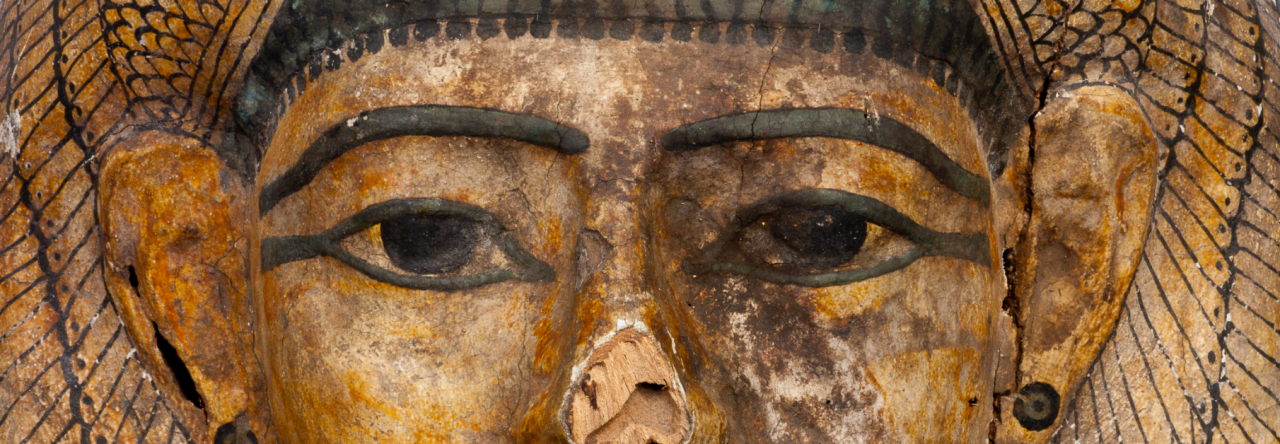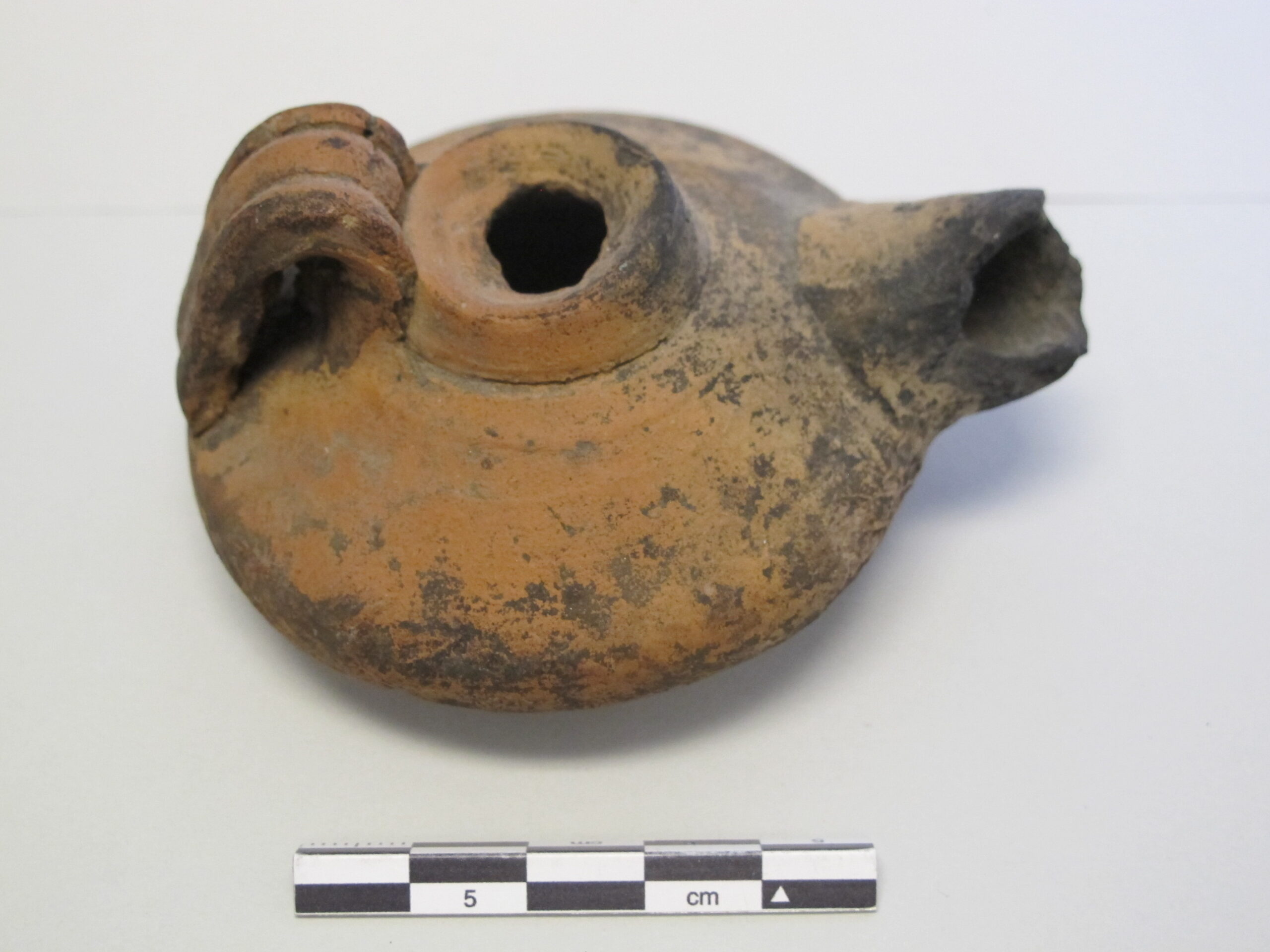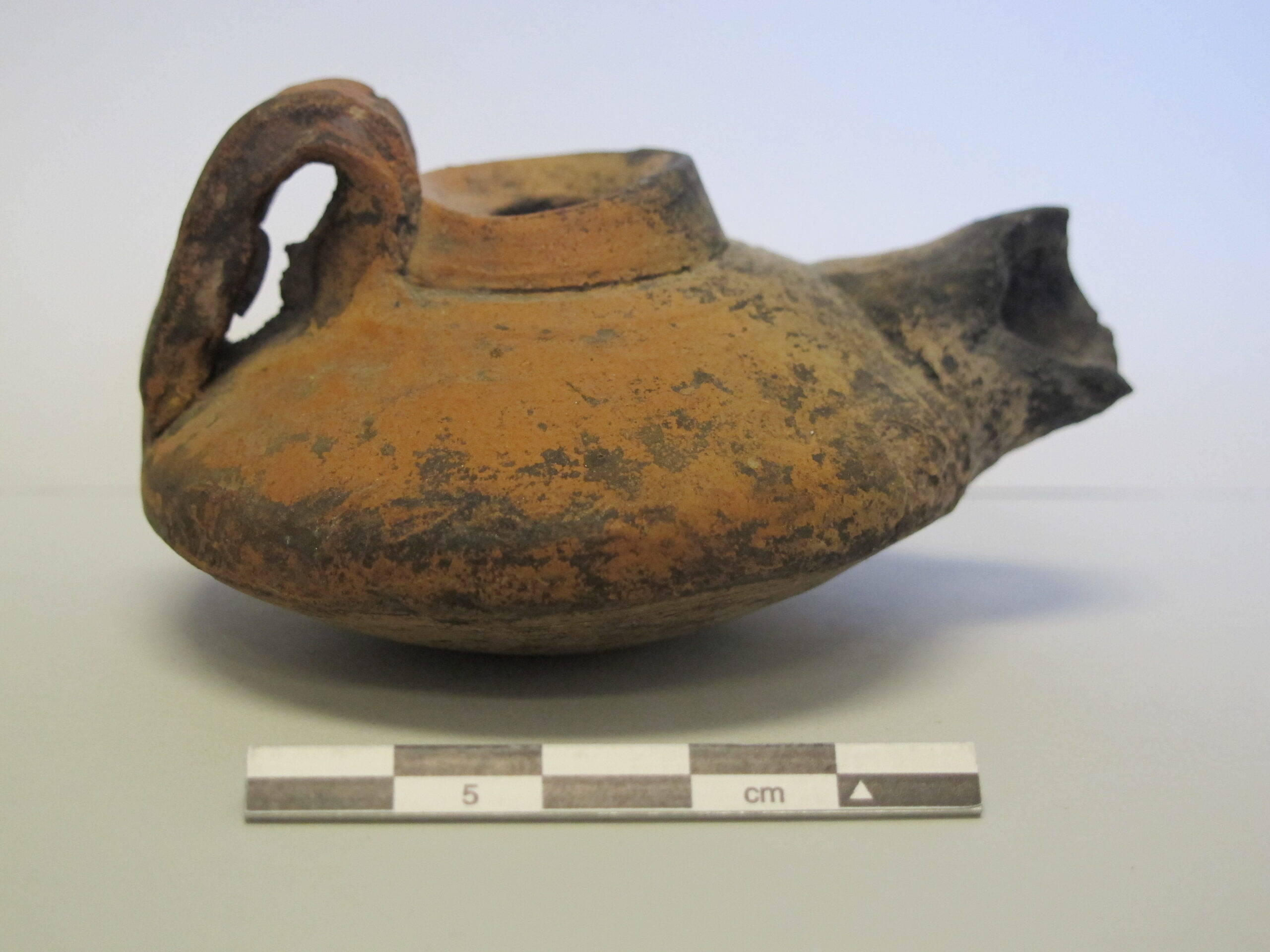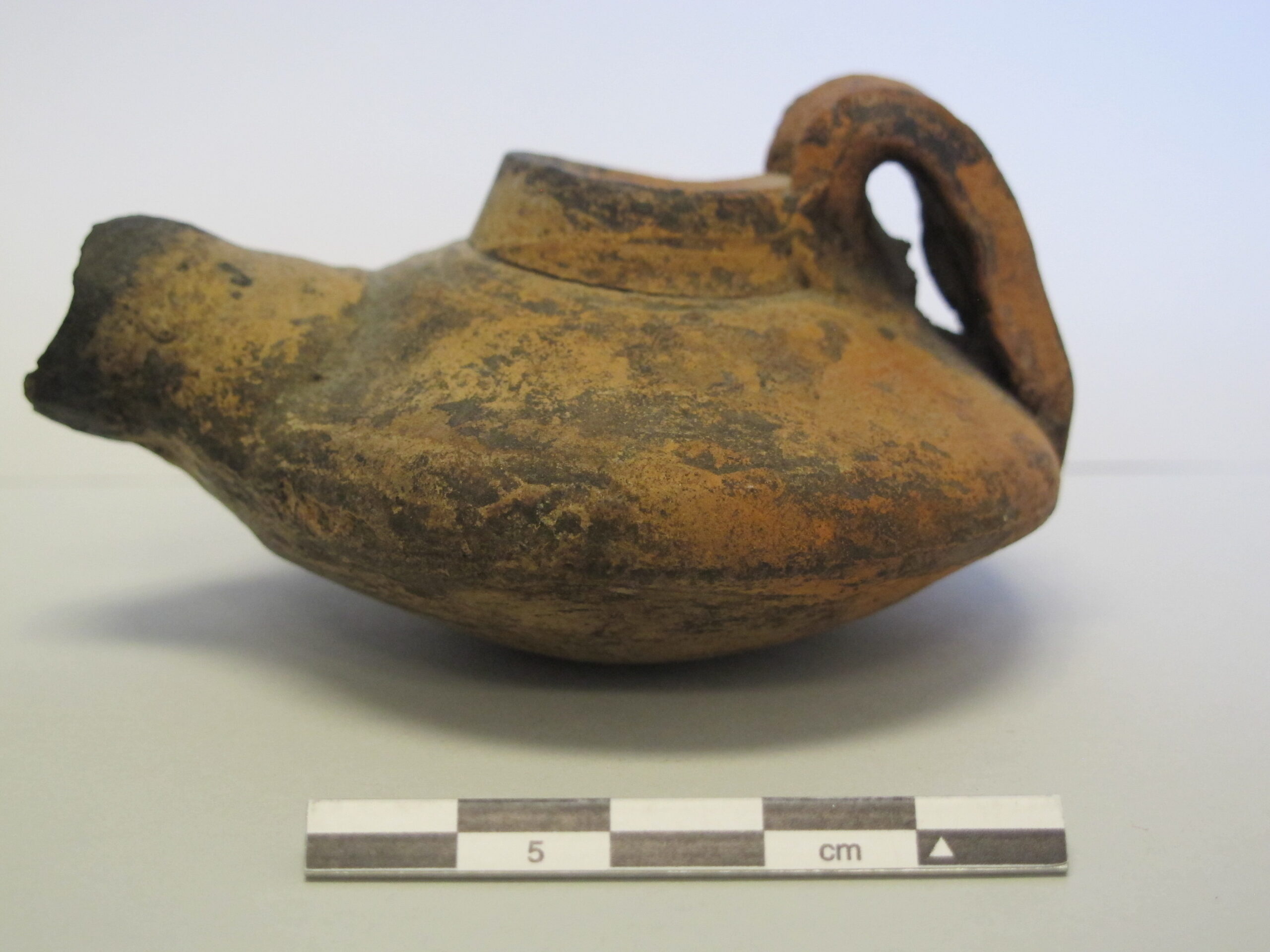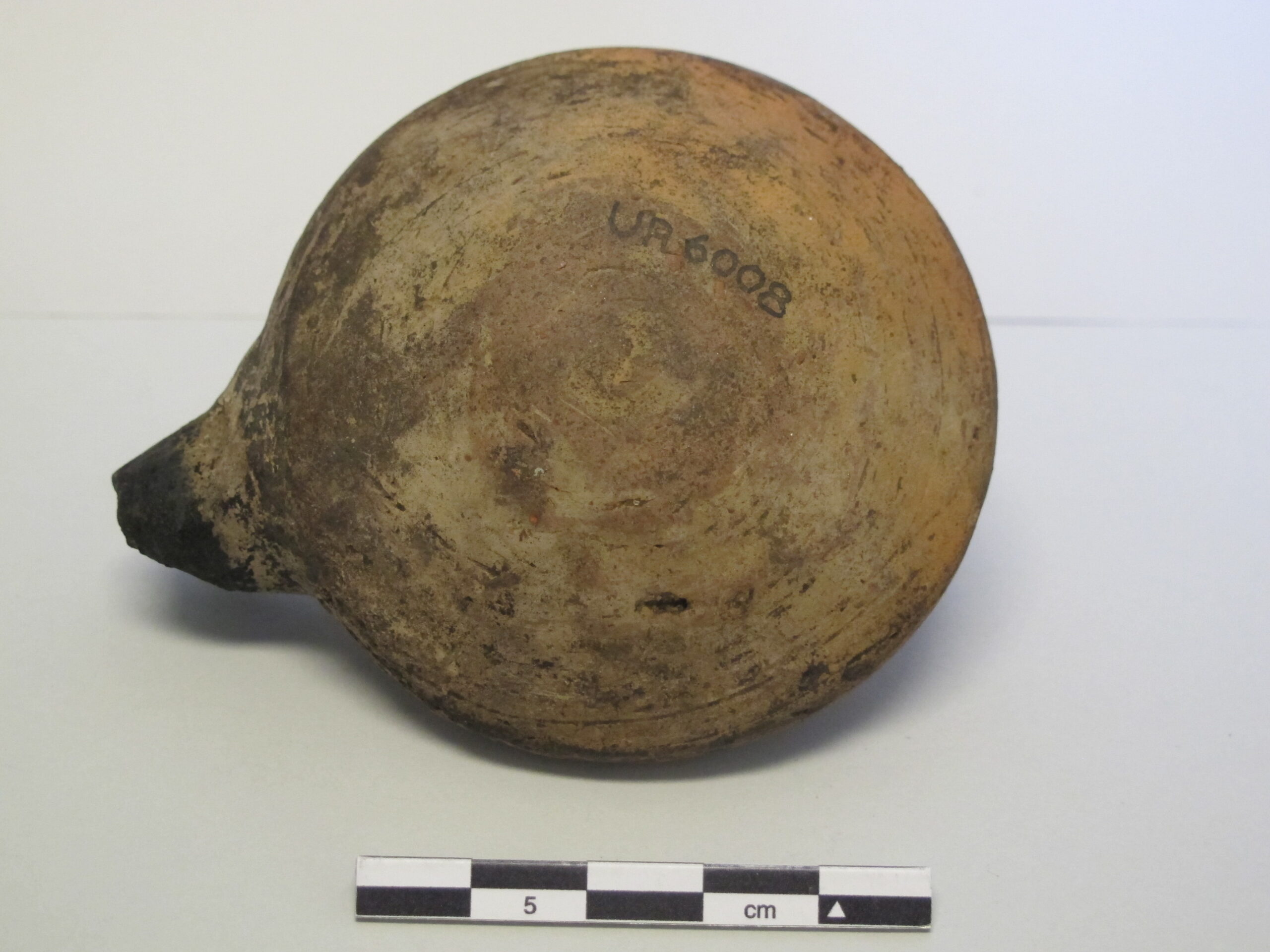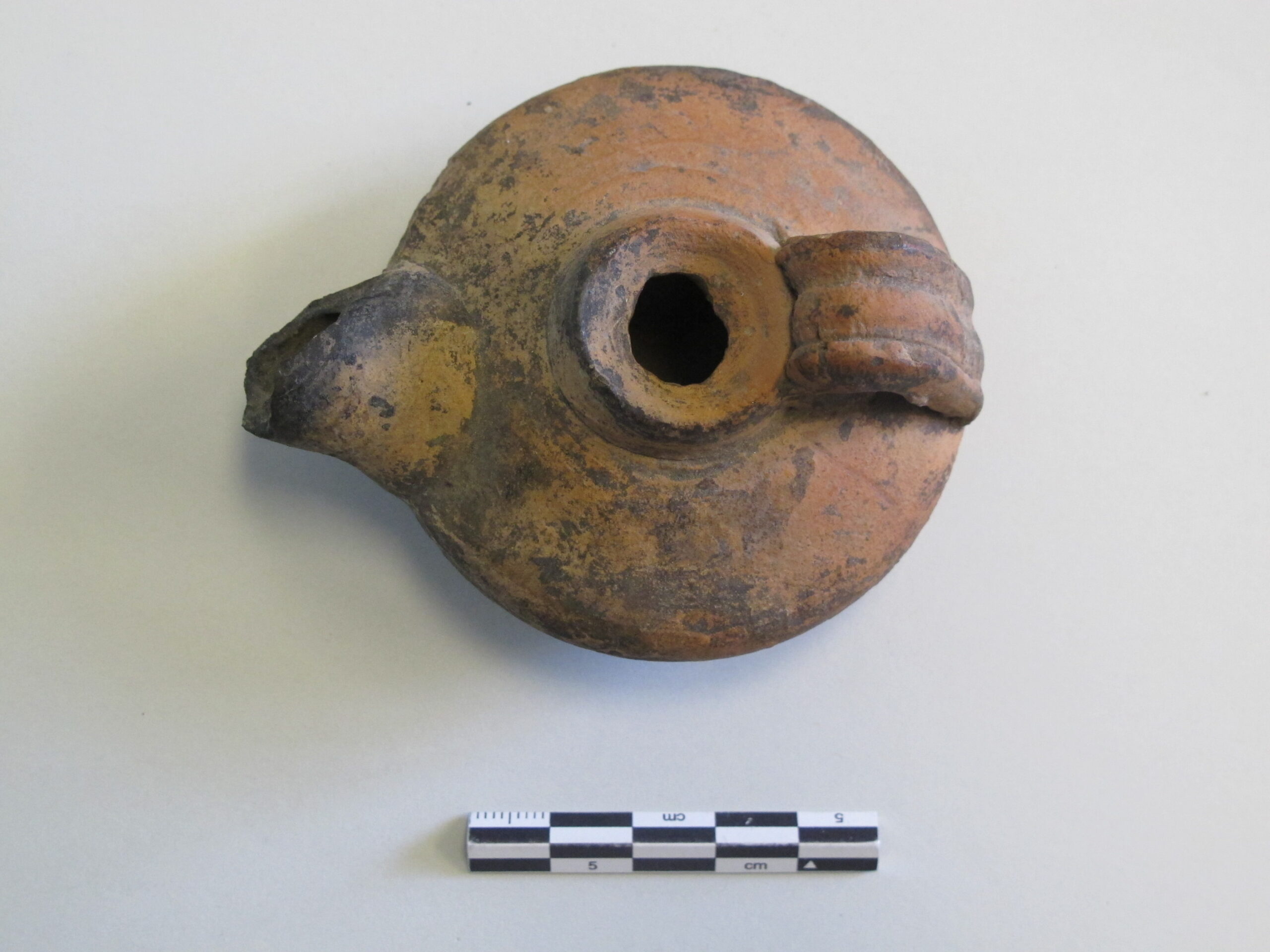For a 3D model made by the Virtual Curation Lab at Virginia Commonwealth University, see https://skfb.ly/orZEv
AWG0000.01.07
Late Roman / Byzantine
3rd-7th century CE
Material: Terracotta
Technique: Wheel thrown body with attached handle and spout
Weight: 85g
Dimensions: 8.5cm long, max. height 4.5cm, max. width 7cm, diameter of opening 1.5cm, diameter of top 2.5cm
Condition: Fair; spout-like nozzle is broken along the edge
Provenance: Unknown
Source/donor: Unknown
Date of acquisition: The old inventory number beginning with UR suggests that it was part of the Richmond College Museum collection. Other UR-numbered items were displayed in the Biology Museum in Maryland Hall beginning in 1932.
Research by: Paige Walworth (Maggie Walker Governor’s School, ’22), Amy Nicholas, ’11
Detailed description of form/shape:
This lamp is made from orange clay with traces of a dark slip and has a closed, circular body. A defining feature is the protruding, spout-like nozzle, which channels the flame from the wick, as is evident by dark residue around the tip. In the center of the body, the clay rises and then recesses, forming a hole in the crater. Attached to this raised center is a small loop handle, decorated with three bands aligned vertically.
Comparanda:
For a lamp with a similar shape labeled as a “‘Teapot’ shape”, cf. Royal Ontario Museum inv. no. 910.166.27 (Ancient Lamps in the Royal Ontario Museum, 1980, pg. 12, Plate 5, Fig. 41)
For a lamp with a similar, although wider, shape from Fayoum around the 7th century CE, cf. Royal Ontario Museum inv. no. 916.1.378 (Ancient Lamps in the Royal Ontario Museum, 1980, pg. 129, Plate 58, Fig. 521)
For a lamp of a similar style known as a lampe théière, cf. Louvre inv. no. E 12946. For a lamp with a similar body shape and banded handle, also called a lampe théière, cf. Louvre inv. no. E 29910. For a lamp with a similar body and spout, cf. “A Catalogue of Lamps in the British Museum, Vol. 3,” Q2273, plate 56.
For an Egyptian lamp from the 5th-8th century CE with a similar round, wheel thrown body and attached spout/handle, cf. Levantine Ceramics Project, inv. no. 41702Ac-K20. For a lamp found in al-Fayyūm, Egypt from the Roman Republic period, with a similar shape, although with a wider top opening and longer, wider spout, cf. Royal Ontario Museum, inv. no. 910.166.90.
Discussion:
Lamps with a similar nozzle, handle, top opening, and body shape are referred to as lamp théière, or teapot lamps in English, due to the characteristic handle and spout. Both lamps found from the Louvre as comparanda are dated to the Byzantine period (late 3rd century to mid 7th century CE). The estimated locations from the comparanda suggest that this style of lamp was mostly commonly found in Egypt and the Levant and continued to be used in the Medieval period.
This lamp was likely formed by wheel throwing, as evidenced by the faint circular patterns on the base. The handle and spout-like nozzle were likely made separate from the body and attached using slip. Evidence of wheel throwing has been found in Pompeii with an oil lamp workshop discovered in the 1950s near Porta Nocera, where oil lamps, oil lamp molds, wheel-formed vessels, kilns, and a potter's wheel were found. Potters’ wheels worked by placing an amphora fragment into the ground to create a cavity inside which a bearing stone and axis were placed to use for rotating the wheel. A diagram of this process by Guilhem Chapelin can be found in the article “Tracing Back the Potters of Pompeii” (Cavessa 2019). Additional evidence of wheels used for pottery can be seen in two frescoes found at Pompeii (Peña and McCallum 2009)
Bibliography:
Cavassa, Laetitia. “OIL LAMP WORKSHOP (I, 20, 2-3).” Archaeological Park of Pompeii. June 5, 2018. http://pompeiisites.org/en/excavations-plan-en/oil-lamp-workshop/.
Cavassa, Laetitia. “Tracing Back the Potters of Pompeii.” CNRS News. November 18, 2019. https://news.cnrs.fr/articles/tracing-back-the-potters-of-pompeii.
Peña, J. Theodore and Myles McCallum. “The Production and Distribution of Pottery at Pompeii: A Review of the Evidence; Part 1, Production.” American Journal of Archaeology 113.1 (2009) 57-79. http://www.jstor.org/stable/20627542.
Robertson, W.B. Ancient Lamps in the Royal Ontario Museum. Toronto: Royal Ontario Museum, 1980.
